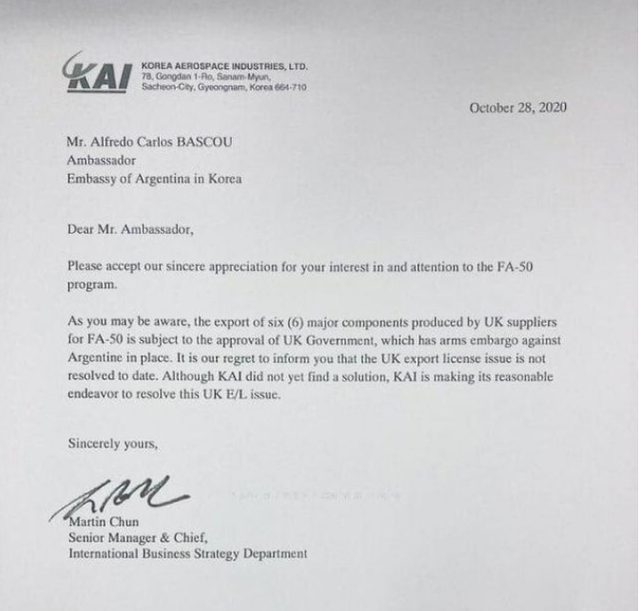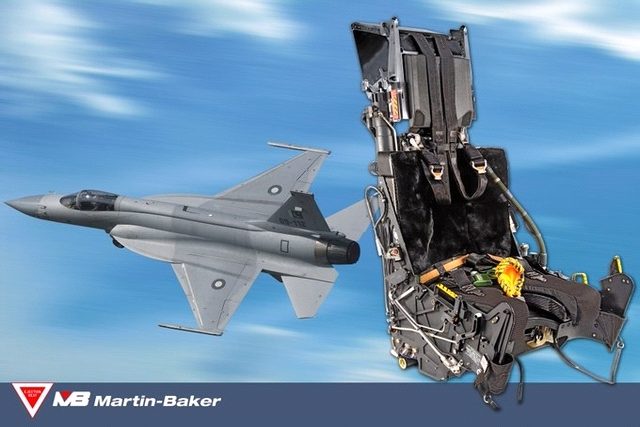Recently, Western media have been widely rumored that China is supplying the South American country of Argentina with a joint development of the “Dragon” (Pakistan code-named JF-17 “Thunder”) light fighter aircraft, and think that the two sides are likely to reach an agreement. But the U.S. Defense World website revealed on the 15th, because the aircraft equipped with British-made catapult seats, in 1982 the Isle of Man (British called the Falkland Islands) war with Argentina, the British will likely step in – a move that was effective when South Korea tried to sell Argentina FA-50 light fighter aircraft.
The old driver is on it. In the field of military aircraft development, is China comparable to South Korea?
Reported that China Aviation Technology Import and Export Corporation (CATIC) sent a delegation to Buenos Aires, Argentina, on the 8th to negotiate, has been close to reaching an export agreement with the country to sell 12 “Dragon”. The Chinese delegation is also said to have visited a local aircraft manufacturing plant in Argentina, which may be involved in the assembly or maintenance of fighter jets. However, “it is not clear whether Argentina intends to purchase the “Dragon” Block II, which is currently equipped by Pakistan, or the “Block III” of the Dragon, which is equipped with active phased array radar.”
According to defenceworld’s website, the Argentine Air Force’s modernization efforts have failed several times as Britain tries to prevent Argentina from acquiring modern fighter jets. Since the retirement of the Mirage-3 fighter jet in 2015, Argentina has had no more supersonic fighters, relying only on the A-4 attack aircraft developed in the 1950s. Since then Argentina has repeatedly sought “affordable fighters” on the international market, but plans to buy them from Spain, Israel, Brazil and South Korea have repeatedly failed under pressure from Britain.
The most famous case is a 2019 agreement between Argentina and South Korea to introduce 12 FA-50 fighter jets, but South Korea informed Argentina’s ambassador to South Korea in October 2020 that FA-50 fighter jets could not be exported because of an arms embargo imposed by the British government on the country. The FA-50 fighter jet could not be exported to Argentina because it contained six major British-made components, including engines and catapult seats, all of which were within the UK’s embargo on Argentina and South Korea could not find a solution, according to Jane’s Defence Weekly.

To tell the truth, this also directly exposed South Korea’s so-called “military aircraft development power” of the true face – also from abroad to buy shelf products for assembly level.
Defense World said the UK could use the trick again on the Dragon, which is currently equipped with a PK16LE catapult seat developed by Martin Baker. On September 5, 2020, when a Pakistani dragon fighter jet crashed, the pilot successfully ejected from the catapult seat, and the British side took the opportunity to publicize the country’s catapult seat.
The problem is that catapult seats, which are a problem for South Korea, are hardly “insurmountable high-tech” in China’s eyes. The HTY-5 and HTY-8 series of rocket-launched seats, commonly equipped by the PLA’s new generation of fighter jets, are also often shown at air shows, and the old driver remembers that the staff at the time was introduced as “equivalent to the performance of advanced models from abroad”. In fact, the “Dragon” prototype is installed with home-made catapult seats, only because the Pakistani Air Force aircraft are generally equipped with British products, in order to simplify the need for logistics and maintenance, the country’s Air Force “Dragon” selected PK16LE catapult seats.
In other words, the use of British catapult seats by dragons today does not mean “irreplaceable”. As one of the world’s few aviation powers, China has long been able to “customized” the provision of fighter aircraft and supporting equipment according to customer needs.
The Eurasian Times said there were rumors that Argentina was also intent on buying Russian-made fighter jets such as the Su-35 and MiG-35s, but that not only were they more expensive, but could also be sanctioned by the U.S. Sanctions Against U.S. Enemy Act, making it likely that the dragon would be argentina’s ideal choice.
The old driver would like to add that, although it is generally believed that the “Dragon” is well suited to Argentina’s needs, but the success of military procurement projects between countries, the basic performance of the product is only one hand, often involved in other factors, such as the Argentine Air Force has long been accustomed to the use of Western warplanes, the Government often have to consider the attitude of the United States.
So it remains to be seen whether the dragon will eventually settle in Argentina. But heard that Britain wants to come to the South China Sea Yaowuyangwei? Oh, look back at the Malvinas Islands in the South Atlantic.



